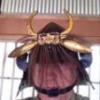-
Posts
14,054 -
Joined
-
Last visited
-
Days Won
258


Bugyotsuji replied to sc72's topic in General Nihonto Related Discussion

Bugyotsuji replied to Matsunoki's topic in Auctions and Online Sales or Sellers

Bugyotsuji replied to Gian's topic in Translation Assistance

